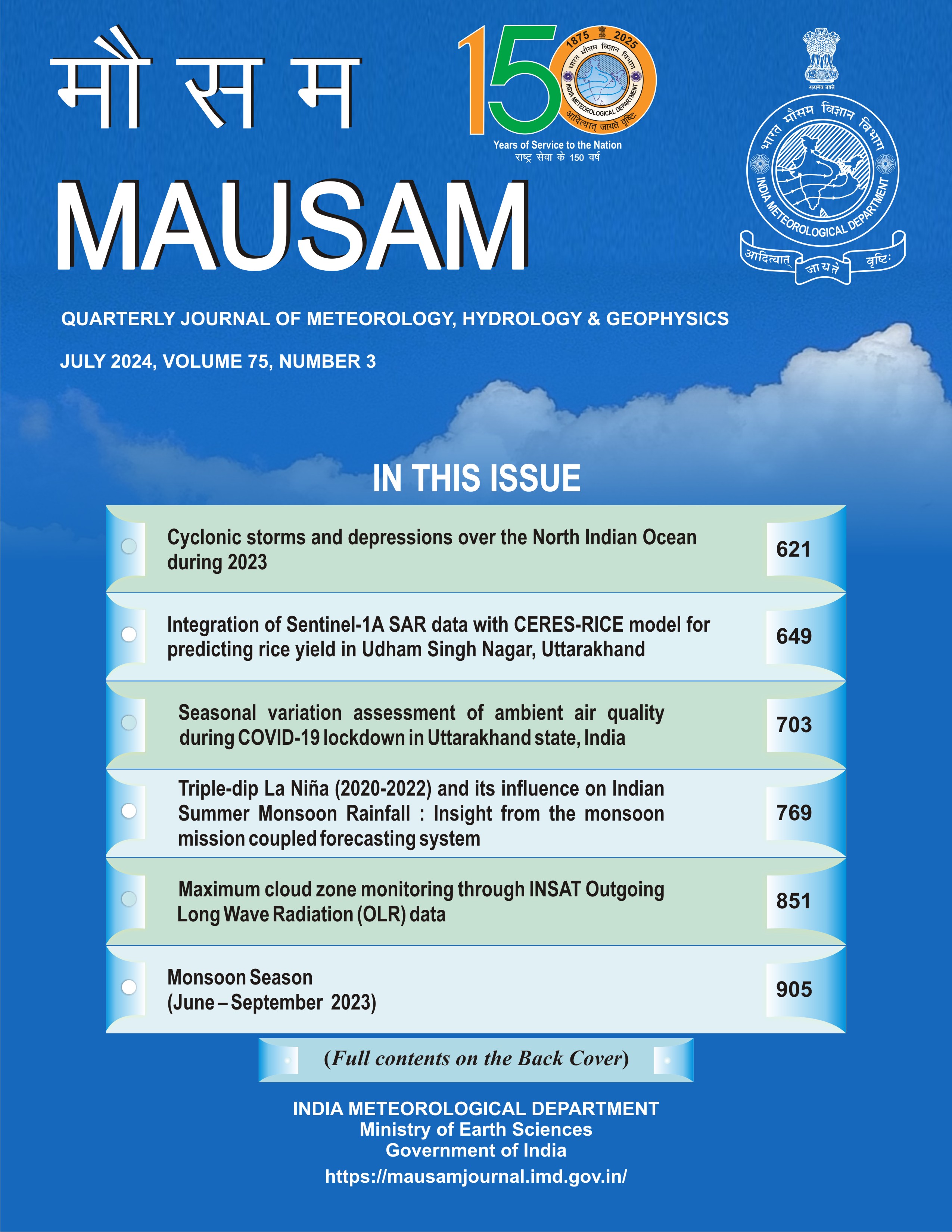The Accuracy of CHIRPS rainfall data and its utilization in determining the onset of the wet and dry seasons in North Sumatra
DOI:
https://doi.org/10.54302/mausam.v75i3.6262Keywords:
Rainfall, CHIRPS, Contingency Table, Onset season, SumateraAbstract
Rainfall is a weather and climate parameter with high variability in space and time. Geographical conditions and atmospheric dynamics cause high rainfall intensity in the Indonesian Maritime Continent (IMC). The availability of rainfall data is crucial to determine the onset of the wet and dry seasons that affect community activities and the formulation of water resources policies. The limited number of rain gauges is a major obstacle in monitoring rainfall. Overcoming this, satellites can be used for rainfall estimation data, one of which is Climate Hazards Group InfraRed Precipitation with Station data (CHIRPS). However, the use of CHIRPS data needs to be tested for accuracy. This study aims to calculate the accuracy of CHIRPS data and its utilization in determining the onset of the wet season and the onset of the dry season. Validation is conducted using in-situ observation data at four BMKG stations in the North Sumatra region using the Contingency Table method. The results show that the four stations have an Equatorial rain pattern, with rain peaks in the September-October-November (SON) and March-April-May (MAM) periods. The monthly CHIRPS data has the highest performance based on the Pearson Correlation value. While the Proportion Correct (PC) of daily rainfall averages 62%, the highest value is at Binaka Meteorological Station. Calculating decade (10-day) and monthly rainfall results in the West Coast region is more accurate than the East Coast of North Sumatra. Determining dry season onset with CHIRPS data tends to be more advanced than dry season onset using the observation data. Meanwhile, the determination of wet season onset shows that most wet season onset occurs simultaneously on the west coast of North Sumatra
Downloads
Published
How to Cite
Issue
Section
License
Copyright (c) 2024 MAUSAM

This work is licensed under a Creative Commons Attribution-NonCommercial 4.0 International License.
All articles published by MAUSAM are licensed under the Creative Commons Attribution 4.0 International License. This permits anyone.
Anyone is free:
- To Share - to copy, distribute and transmit the work
- To Remix - to adapt the work.
Under the following conditions:
- Share - copy and redistribute the material in any medium or format
- Adapt - remix, transform, and build upon the material for any purpose, even
commercially.



